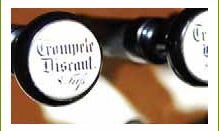Johanneskirche Erbach
65346 Eltville
Tel.: 06123 / 62221
Fax: 06123 / 81239
religious denomination: protestant
The neo-Gothic church of St John in Erbach, built by the master builder of the Duke of Nassau Eduard Zeiss, was the first Protestant church in the upper Rheingau and owes its existence to an endowment from the Princess of the Netherlands, Marianne of Prussia (1810-1883). After her divorce from Prince Albrecht of Prussia, Princess Marianne lived in Reinhartshausen Palace in Erbach with her secretary and closest confidant, Jan van Rossum, and their son, Johann Wilhelm. When Johann Wilhelm died of scarlet fever in 1861 at the age of 12, she fulfilled his wish for a Protestant church in Erbach. She signed the documents for the church, vicarage and living the very evening of his death. Johann Wilhelm was buried in the crypt of the church. At the head end of the grey Lahn marble sarcophagus stands a little angel made by the Dutch sculptor Stöver. Stöver also created the figures behind the altar. Originally there were three figures made in Rome of white Carrara marble, symbolizing faith, hope and love. Since the renovation, the centre figure - love - can be found in a small memorial room near the entrance and has been replaced by a cross. The original blue ceiling with golden stars and the decoration of the previously splendid side boxes also fell victim to this renovation. In order to emphasise the character of a mourning church, the originally planned choir windows were dispensed with. These were not put in until 25 years later. The middle "grape-vine window" was donated by the eldest son of Princess Marianne, Prince Albrecht of Prussia. Princess Marianne herself was buried in the Erbach graveyard next to her partner in life, Jan van Rossum.
Points of interest
- Entrance portal to the crypt in the church
- Crypt with the sarcophagus of Johann Wilhelm (entrance behind the church)
- Early Romanesque Voigt organ, built in 1863 (18 registers)
- Walk on the trail of Princess Marianne with the church, crypt, vicarage garden, Erbach cemetery and Reinhartshausen Palace



